Comparison between 802.11/n and 802.11/ac - Part 2 (Guest Blog)
By Marcelo Ferreira On 09/22/2021
Additional explanation that is common to both technology
Spatial Stream
In the example below we have a 1:1 device that is capable of 1 Stream at time being served by one AP which is capable of 3 Streams at time. Normally devices like Tablets and Smartphones use 1 Spatial Stream to expend less energy and save more battery but in the other hand has less data transmission and throughput.
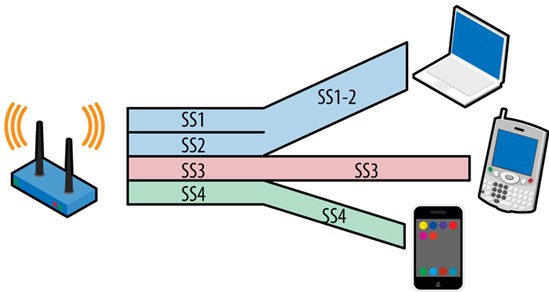
Throughput vs Data Rate
Explaining about Throughput vs Data Rate. Interferences like CCI, OBSS, Non-Wi-Fi Interference and other devices communication can reduce the airtime available making the throughput much lower than the data rate obtained by the endpoint device.
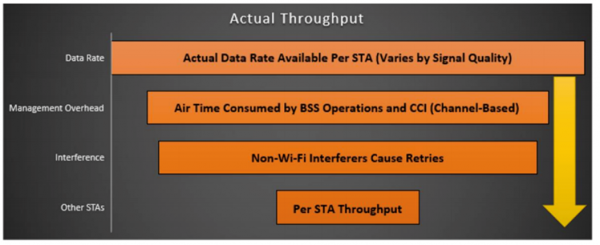
Observe in the picture above how the throughput reduced compared to the initial data rate available at the beginning
Guard Interval
− Gap between Symbols
− Protects against signal corruption due to inter-symbol interference
− Use of Short Guard Interval is configurable
− Guard Interval is used to avoid signal loss from Multipath effect
In MIMO Technology introduced with 802.11/n one of the benefits is the usage of Multipath. The RF Signals reach the receiving Antennas by multiple paths (Diffraction, Reflection, Scattering, etc.), if the last information symbol reaches the antenna too fast, signal can interfere with the earlier information symbol meaning signal degradation so guard interval put some pauses between those transmissions which increase the performance in the end. Shorter interval increases more the Data Rate and performance than Long Interval as you could observe in the table above when talked about the protocols.
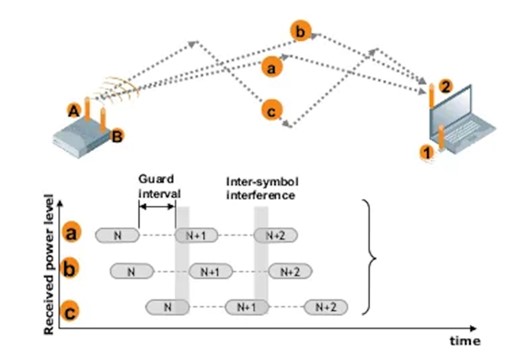

Device Type comparison in 802.11n and 802.11ac
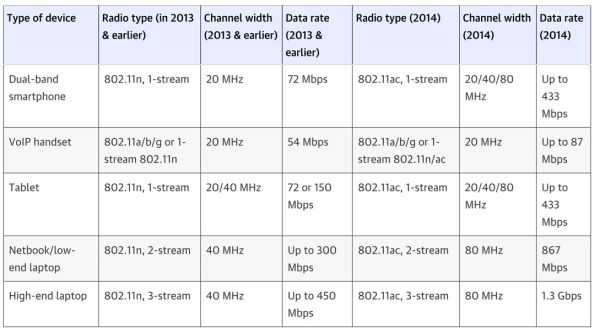
Frame Aggregation improvements on 11ac compared to 11n – see graphics below
In terms of frame aggregation, for 802.11n the largest MPDU size is 7935 octets while in 802.11ac the maximum size is 11 454 octets.
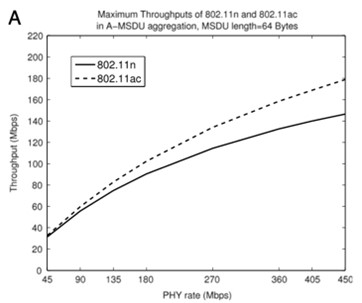
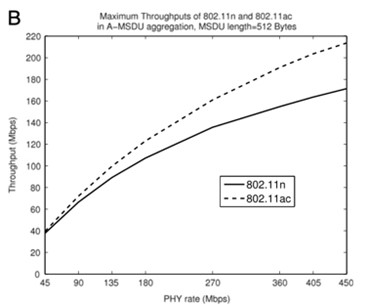
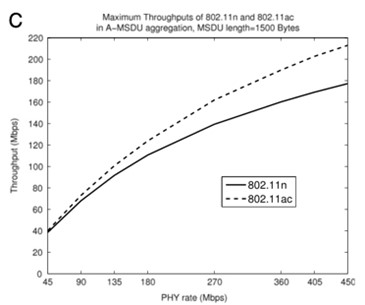
LAB Test 1 – Client test with iperf3 running 802.11n on 5Ghz – 20Mhz Channel
Information about the APs, Controller and 802.11n configuration



3 Clients with 802.11/n at 5Ghz
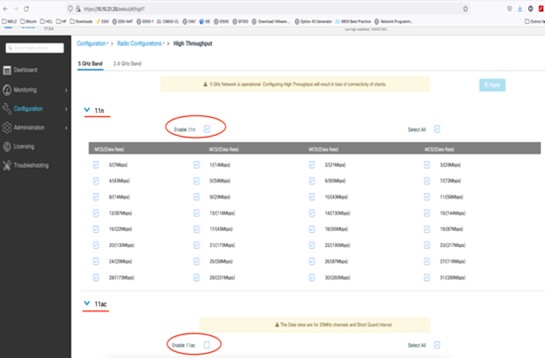
Controller Configuration with 802.11/n disabled
Tests with clients running iperf3 client with defined 10 times

Macbook Pro 16" - Avg 37.1 Mbps

Windows 10 - Avg 32.3 Mbps
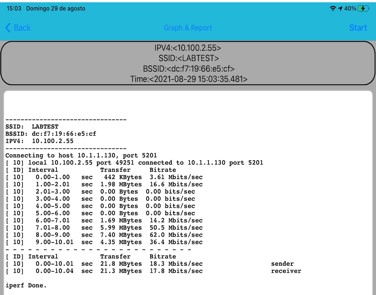
iPad Pro 11" - Avg 18.3 Mbps
LAB Test 2 – Client test with iperf3 running 802.11ac on 5Ghz – 20Mhz Channel
Information about the APs, Controller and 802.11n configuration



3 Clients with 802.11/ac at 5Ghz

Controller Configuration with 802.11/ac enabled
Tests with clients running iperf3 client with defined 10 times
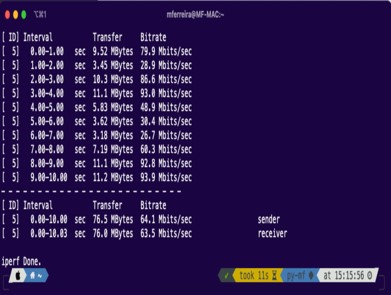
Macbook Pro 16" - Avg 64.1 Mbps
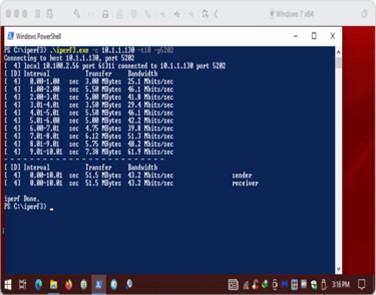
Windows 10 - Avg 43.2 Mbps

iPad Pro 11" - Avg 81.2 Mbps
Conclusions
Results:
Avg Performance
802.11/n - 29.23 Mbps
802.11/ac - 62.83 Mbps
11ac - Improvement over 11n
114.95%
Observations
During the tests we could observe that in environments with only few clients 802.11n clients had not affect in terms of performance but when connecting more clients to AP we could observe a big degradation in performance specially IOS and MacOS clients, Windows clients degraded but not much compared to Apple devices.
Because of MU-MIMO Technology used in 802.11/ac it helped on performance attending more clients at same time increasing performance in general for all clients connected to the same AP.
Blog Disclaimer: The opinions expressed within these blog posts are solely the author’s and do not reflect the opinions and beliefs of the Certitrek, CWNP or its affiliates.



